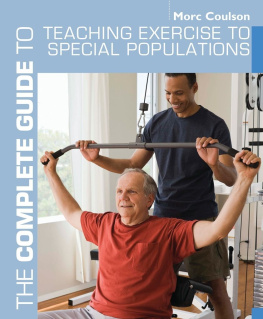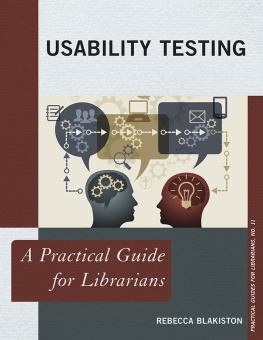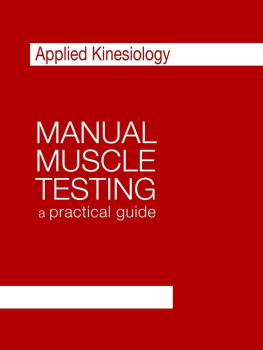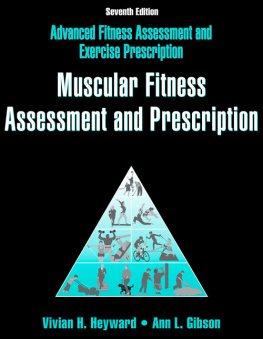Morc Coulson - Practical fitness testing
Here you can read online Morc Coulson - Practical fitness testing full text of the book (entire story) in english for free. Download pdf and epub, get meaning, cover and reviews about this ebook. year: 2015, genre: Children. Description of the work, (preface) as well as reviews are available. Best literature library LitArk.com created for fans of good reading and offers a wide selection of genres:
Romance novel
Science fiction
Adventure
Detective
Science
History
Home and family
Prose
Art
Politics
Computer
Non-fiction
Religion
Business
Children
Humor
Choose a favorite category and find really read worthwhile books. Enjoy immersion in the world of imagination, feel the emotions of the characters or learn something new for yourself, make an fascinating discovery.

- Book:Practical fitness testing
- Author:
- Genre:
- Year:2015
- Rating:4 / 5
- Favourites:Add to favourites
- Your mark:
- 80
- 1
- 2
- 3
- 4
- 5
Practical fitness testing: summary, description and annotation
We offer to read an annotation, description, summary or preface (depends on what the author of the book "Practical fitness testing" wrote himself). If you haven't found the necessary information about the book — write in the comments, we will try to find it.
Morc Coulson: author's other books
Who wrote Practical fitness testing? Find out the surname, the name of the author of the book and a list of all author's works by series.
Practical fitness testing — read online for free the complete book (whole text) full work
Below is the text of the book, divided by pages. System saving the place of the last page read, allows you to conveniently read the book "Practical fitness testing" online for free, without having to search again every time where you left off. Put a bookmark, and you can go to the page where you finished reading at any time.
Font size:
Interval:
Bookmark:

Having been a competitive athlete for many years, I understand how important fitness testing can be. Regular testing allows the athlete and the coach to check the progress of the training programme, but it also helps the athlete focus on short-term goals by providing a measure of their performance compared to their peers. I believe that there are many athletes who could benefit from regular health and fitness testing. Practical Fitness Testing offers a comprehensive guide to the theory and practical application of health and fitness testing for coaches and instructors of all levels across all sports and events.
Chris Cook
Athens and Beijing Olympic Games competitor in swimming, 2004, 2008
World Championships Bronze medallist, 2006
Commonwealth Games Gold medallist, 2006
British and Commonwealth record holder in swimming
One of the many aims of fitness testing is to collect information about the progress of an exercise programme.
When someone starts out on a training programme, they usually agree goals with their coach or instructor. Testing can both establish whether those goals have been met, and what adjustments, if any, could be made.
The entire testing process, irrespective of the methods used, can be thought of as a cyclical process as shown in .

This cyclical process provides the coach or instructor with a standardised, easy-to-follow format that can be repeated on an ongoing basis.
Once you have decided what you want to test (for example strength, aerobic capacity, flexibility etc appropriate to the subject and their sport or event), you can select the method that will best measure it with the resources available. Test data can then be collected, analysed and interpreted so that adjustments to the individuals training programme can be made. Analysis of test results often becomes easier as you gain more experience but it is important that you remain objective and use the most appropriate form of analysis relevant to the subject.
The results of a one-off test provide the baseline from which to construct an appropriate exercise programme but you need to carry out further testing in order to continue to assess and progress that programme.
Practical Fitness Testing has been written as a reference guide for those regularly involved in fitness or health testing. It deals with both laboratory and field-based testing and is useful for coaches and instructors who do not have access to the particular facilities or specialist equipment required in more formal testing environments.
This book will give you a basic understanding of the principles related to health and fitness testing and the cyclical process described earlier, and suggest suitable and practical tests related to particular characteristics, events or sports.
The book describes in detail a range of health and fitness testing methods (or protocols, as they are known), and describes the methods of analysing the data and classifying the results according to published specific population data.
Within the book, tests are divided into two general categories: health tests and fitness tests. Health tests can be carried out on anyone and are used to assess readiness for undertaking exercise programmes. Fitness tests are usually carried out on people who are more active, and are used to assess the performance of particular characteristics or parameters. The following is a brief overview of each chapter.
deals with the analysis and classification of specific data derived from basic test measurements, such as muscular strength, body fat percentage and lung function. The chapter also deals with the meaning and treatment of terms such as validity, accuracy, objectivity, reliability and normative data in the context of health and fitness testing. The chapter explores the difference between laboratory and field testing, direct and indirect tests, and maximal and sub-maximal testing, and provides examples in each related area. Sources of measurement error and variation regarding equipment and biological differences are also discussed. Finally, this chapter deals with the area of statistical analysis for the interpretation of test data. Topics such as average values, standard deviations, correlation and t-tests are all addressed.
discusses the meaning of fitness in terms of both health and performance, and addresses the importance of being physically fit. The chapter also describes the most commonly agreed components of fitness and discusses which of these are most important for specific sports, activities or events. It looks at energy systems and their contribution to exercise, particularly at different intensities and durations. For a more detailed description of energy systems please refer to The Fitness Instructors Handbook by Morc Coulson and The Advanced Fitness Instructors Handbook by Morc Coulson and David Archer, both published by A&C Black.
deals with a range of health tests commonly used by coaches and instructors, and the issues of screening and informed consent. The tests include heart rate, blood pressure and lung function. It looks at the underpinning knowledge required and the area of health it relates to. As well as an overview of each test, there is step-by-step instruction on how to administer each of the described tests. There is also explanation of how to deal with the test results from an analysis perspective. Finally, there is a classification for each test, which provides comparative data from various populations.
deals with tests related to body composition, the estimation of body fat percentage and the difference between direct and indirect testing methods. This topic has been given a chapter of its own due to the amount of information available. The chapter explains the different components of body mass and describes a variety of ways to estimate them (using prediction equations). The chapter also provides instructions on how to identify landmarks on the body, and how to carry out certain body composition assessments using those landmarks.
The remaining chapters follow the same format as , which are often considered to be static.
covers flexibility testing in comprehensive detail and introduces the terms static and dynamic flexibility, discussing their importance in a sports and fitness environment as well as in a health environment. Testing methodologies are described covering areas such as anatomical reference points and factors that can affect joint range of motion. Joint stability and the mechanisms of contribution are also addressed. The chapter discusses the limitations of indirect testing methods and the difficulties in testing dynamic flexibility. It also looks at interpretation, comparison and evaluation of the results of measurements of flexibility.
is dedicated to tests relating to muscular strength and endurance. Various terms are explained as well as factors that determine both strength and endurance. Advantages and disadvantages of using resistance machines and free weights are discussed in detail from a testing perspective. Issues concerning maximal and sub-maximal muscular strength testing are explored in the light of the huge range of research in this area. Also from a research perspective, the issue of muscular strength being affected by age, gender, velocity of movement, joint angle and other factors is addressed.
Next pageFont size:
Interval:
Bookmark:
Similar books «Practical fitness testing»
Look at similar books to Practical fitness testing. We have selected literature similar in name and meaning in the hope of providing readers with more options to find new, interesting, not yet read works.
Discussion, reviews of the book Practical fitness testing and just readers' own opinions. Leave your comments, write what you think about the work, its meaning or the main characters. Specify what exactly you liked and what you didn't like, and why you think so.









